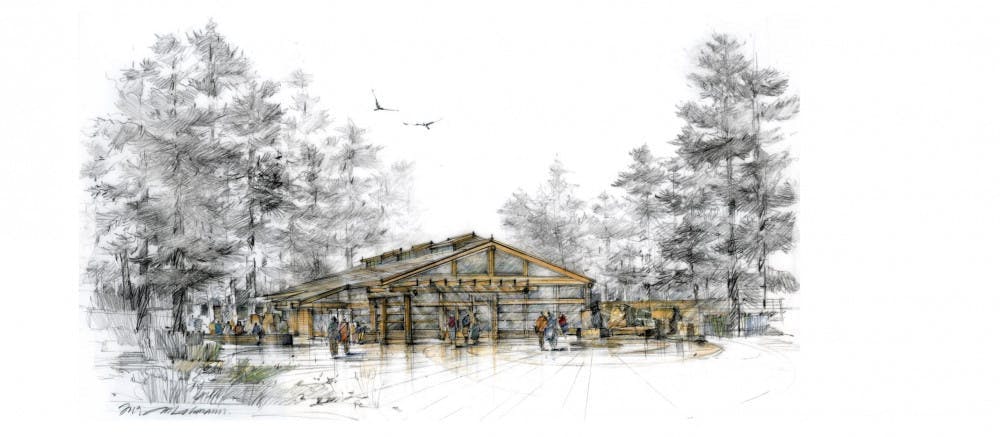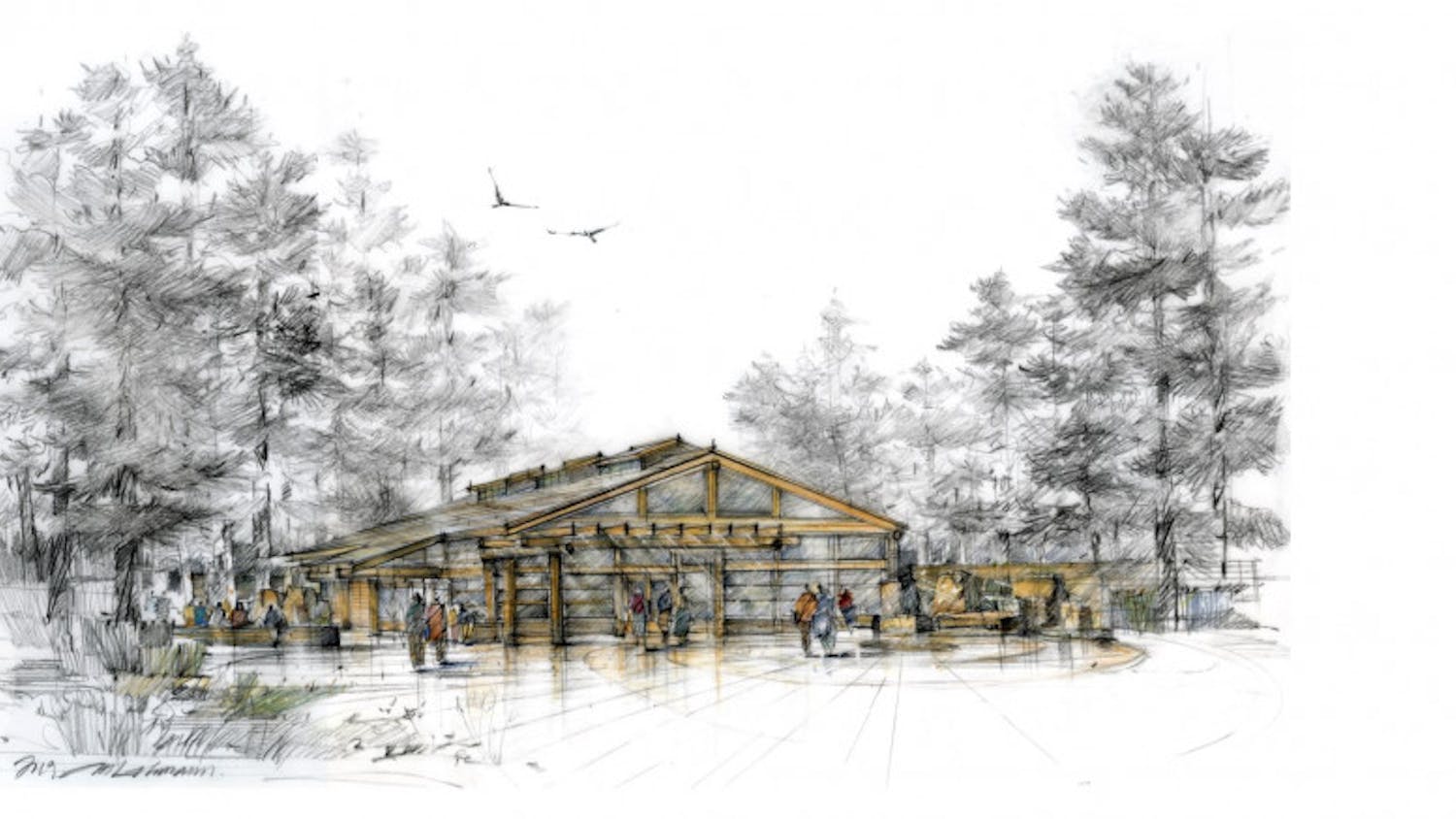Bellingham city officials are supportive of the construction of Western’s longhouse as an opportunity to further tribal relations in Whatcom County.
The construction of a Coast Salish style longhouse in Bellingham has been a long-time discussion for the greater community, and elected officials are offering their full support.
“The Sehome Arboretum will be a beautiful location for such an important and long overdue cultural center honoring the region's tribes, whose land the Western Washington University campus and City of Bellingham occupy,” Mayor Seth Fleetwood said.
Fleetwood said the city supported the vision to build a traditional Coast Salish style longhouse in the Sehome Arboretum and is excited about the opportunity to partner with regional tribal leaders and Western to make it a reality.
Lisa Anderson, city councilmember, said she was excited Western was stepping up and that the city would be providing the space and resources to facilitate the construction of the longhouse.
“I look forward to finding out more as far as Bellingham as a community — we've had small successes along the way with recognition,” Anderson said. “In a lot of ways, I feel, as a greater community and government, we've been slower than we should have been.”
The first Coast Salish style longhouse built on a college campus was constructed at Evergreen State College in 1995. It has since become an anchor for Native American heritage and cultural practices in Olympia.
Western will become the fifth and latest college along the Interstate 5 corridor to build a longhouse for its Native students, furthering the legacy of Mary Hillaire, who founded the first longhouse and established the Native American studies program at Evergreen.
Anderson said recentering Native American heritage in Bellingham through the longhouse would be a great opportunity to build relations with the tribes in the future.
“We're very fortunate in so many ways to have the Lummi Nation and the Nooksack Tribe in our community,” Anderson said. “I think this is really important for us to make sure that we open those channels of communication and make sure that they're open.”
Gene Knutson, city councilmember, said the timing is right and long overdue, he said it would be really great to have the longhouse up in the arboretum.
“It will be a great asset to the university and the community, our long relationship with the tribes is historic and this project will highlight that great relationship we have and will have in the future,” Knuston said.
Washington State Legislature finally accorded funding for Western to build the cultural center in the Sehome Arboretum, as part of the five requests formulated five years ago by the Native American Student Union. The other four requests were:
Implementation of a Tribal Liaison Position who will connect WWU with the local Tribal Nations
Requiring students to verify tribal enrollment or descendancy when applying to WWU and scholarships that are allocated for American Indian/Alaskan Native students housed within WWU
Full funding for the Annual Spring Pow Wow
Government-to-Government Training between WWU government and the local Tribal Governments facilitated by the Governor’s Office of Indian Affairs
In 2019, Western announced Laural Ballew would be the official tribal liaison, fulfilling one of the other four requests. Ballew, Tribal Liaison for Western and executive director of American Indian, Alaska Native and First Nations relations, told The Front that the purpose of the longhouse will be to provide an environment and hub for Native students to learn about their history and culture in their own gathering space, as well as host events such as the annual spring powwow.
When Ballew took up this new position at Western, she detailed her plans for advancing tribal relations into the future.
While the longhouse is only the second step in her plan, city officials like Anderson and Knutson said the construction and celebration of the new cultural center will greatly benefit Bellingham and the Native American community.
Western’s longhouse will be funded by the state, rather than the city, so it will not be a public works project, according to an email by Michael Lilliquist, Bellingham city councilmember and chair of the public works committee.
Paul Cocke, Western’s director of University Communications, told The Front the funding for the $4.9 million project was coming from both the statehouse and Senate budgets.
“I am grateful for the support this project received from our state legislators and am excited that this significant cultural, educational and inspirational facility will be built to serve students and all members of our community,” Fleetwood said.
According to Anderson, Fleetwood recently said he would love to enter talks about reconciliation with Lummi Nation, expanding the city and nation’s relationship for future healing and possibly commissioning a totem pole for Bellingham.
Recently, a totem pole carved by Lummi Nation House of Tears Carvers began its journey to Washington, D.C. to be presented to the Biden administration later this year before being displayed in the Smithsonian’s National Museum of the American Indian, as reported by WhatcomTalk.
“We are fortunate to live in a time of a broader awakening, an awakening that includes increased consciousness of the rich history of the Coast Salish people, their flourishing culture and their continued contributions to our community,” Fleetwood said. “This awareness is manifest in our community’s growing interest in honoring Coast Salish heritage, in ways that allow us to learn and grow, and that are prominently reflected throughout our community.”
As reported by The Front in 2015, Bellingham decided to cease celebrating Columbus Day and instead decided to celebrate Coast Salish Day with the purpose of honoring and respecting all tribes who lived in Whatcom County for thousands of years before Bellingham existed.
The same year, Bellingham changed Indian Street to Billy Frank Jr. Street.
These developments preceded the NASU’s demands by only a year, underlining the ever-so-recent development in the recognition of Coast Salish people.
If you want to learn more about the latest advancements in Coast Salish recognition, you can read more about the announcement of the Billy Frank Jr. statue headed to the U.S. Capitol and about what Ballew had to say about Western’s longhouse.
Kelton Burns is a reporter for The Front and a third-year Journalism: News/Editorial major. His work focuses on city news, usually related to City Council. He enjoys reading game reviews in his free time. You can reach him at keltonburns.thefront@gmail.com
Clifford Heberden (he/him) is the City News Editor for The Front. He’s a third year News/Ed major planning to minor in Philosophy. With his reporting, he’s mainly focused on local and state-wide environmental news and legislation but has also worked to report on social issues in Whatcom County. You can reach him at citynewseditor.thefront@gmail.com or chbrdn.thefront@gmail.com.
His Twitter handle is @cliffbutonline.




